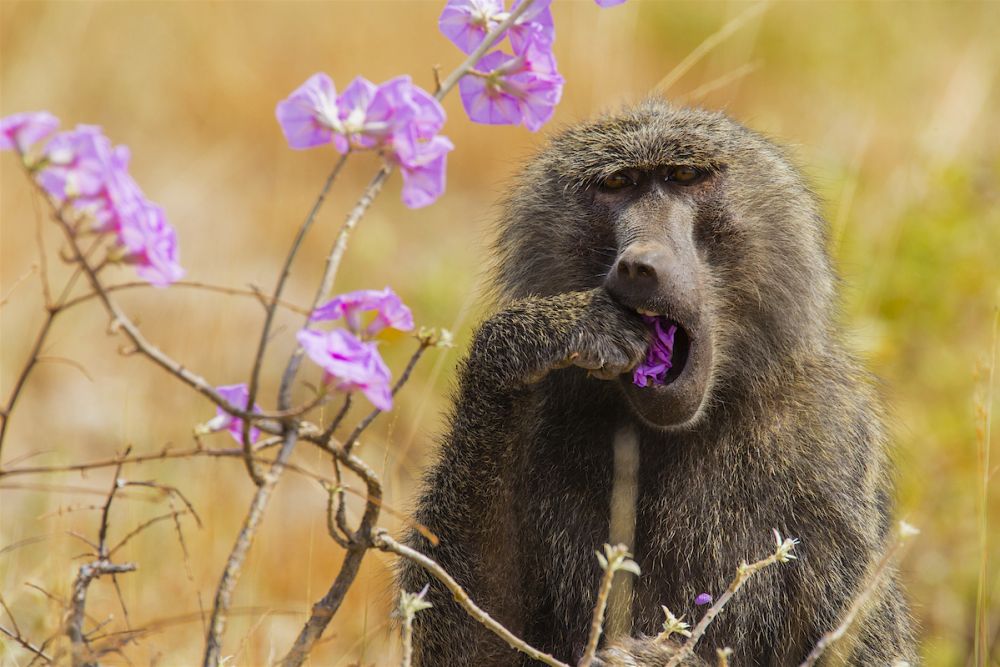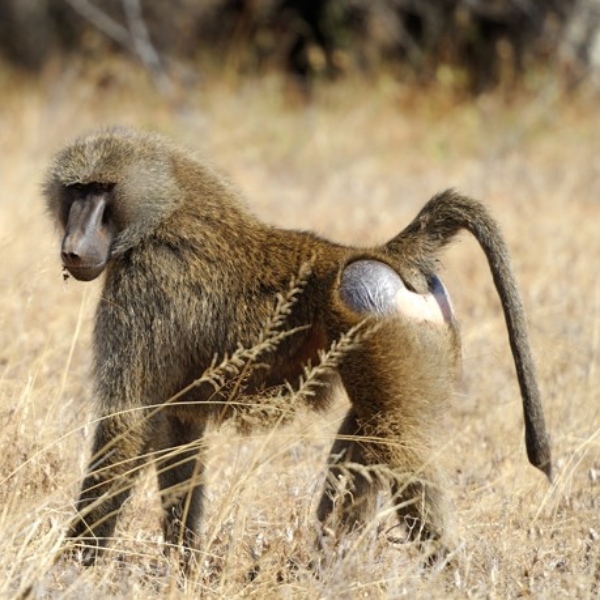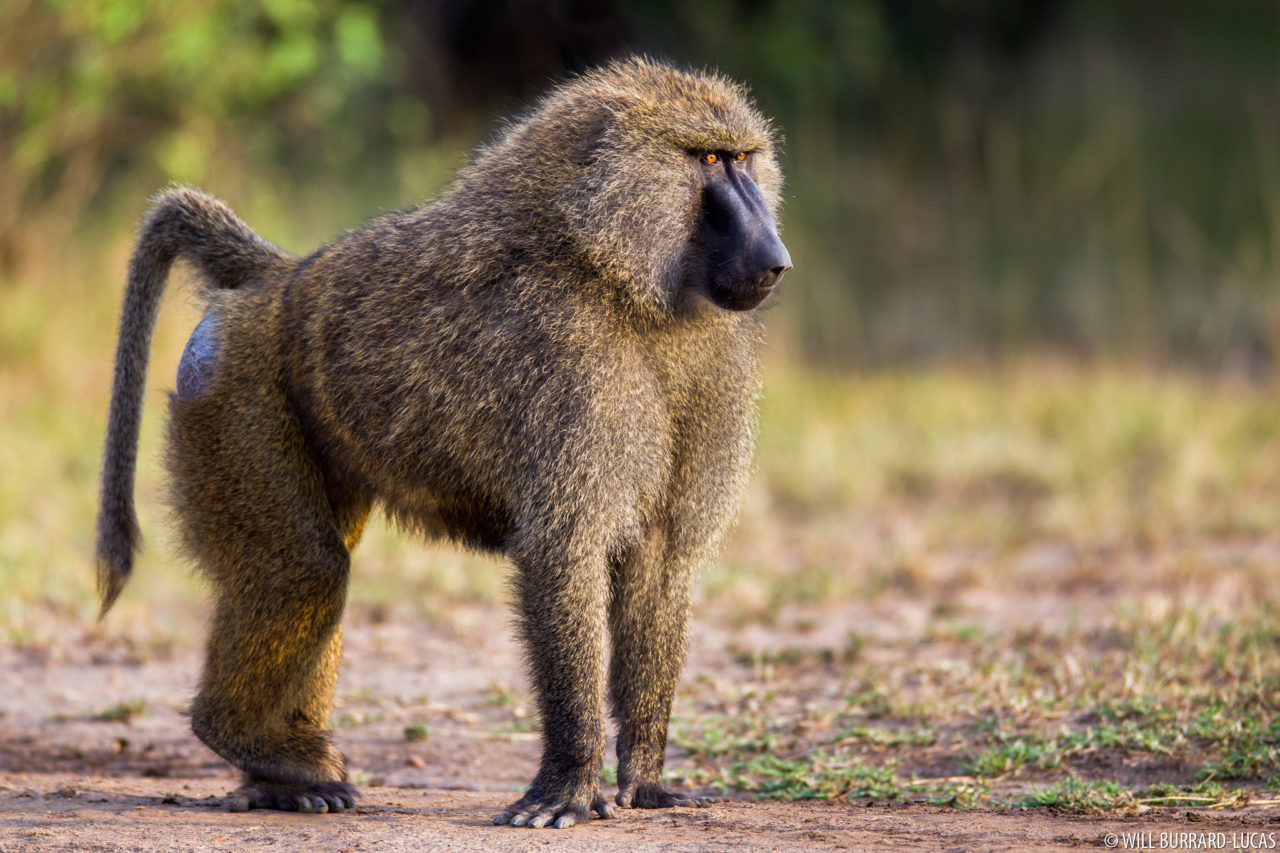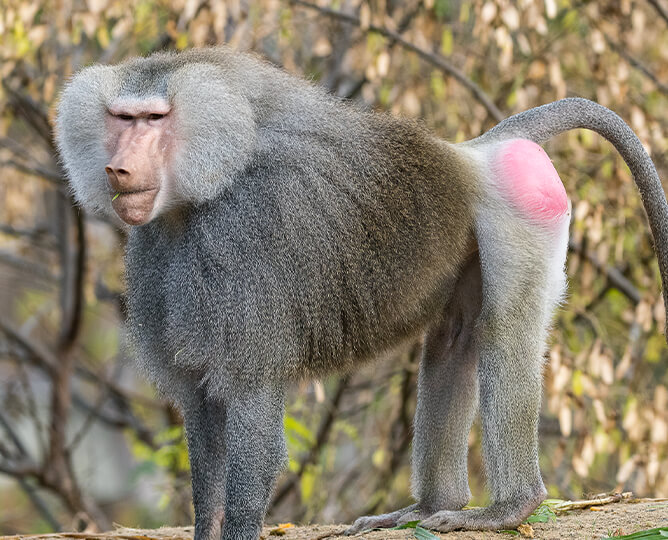
Olive Baboon, Uganda kibale Rod Waddington Flickr
Baboons are the world's largest monkeys, according to National Geographic. From head to bottom, baboons grow to 20 to 34 inches (60 to 86 centimeters) and their tails add an additional 16 to 23.

Baboons in full morning glory Samburu, Kenya Wild Focus Expeditions
5. Baboons teeth are longer than a leopards. Male baboons can have canine teeth that measure almost two inches long. They use them in yawning threat displays to rivals, and will use them as weapons to attack prey and in self defence. Like adult humans, baboons also have 32 teeth in their mouths. 6.

Baby Baboons at Play Nature's Best by Don Smith
baboon, (genus Papio ), any of five species of large, robust, and primarily terrrestrial monkeys found in dry regions of Africa and Arabia. Males of the largest species, the chacma baboon ( Papio ursinus ), average 30 kg (66 pounds) or so, but females are only half this size.

The Incredible Eyesight of Baboons Londolozi Blog
Weight: 33 to 82 pounds. Size relative to a 6-ft man: There are five different species of baboons. All of them live in Africa or Arabia. Baboons are some of the world's largest monkeys, and males.

Olive Baboon Olive baboon eating grass in the Serengeti Na… Flickr
Whereas the largest species is close to 120 cm in height and 40 kg in weight. Baboons contain long and dog-like muzzles. They have heavy and strong jaws. Their canine teeth are sharp. Baboons have close-set eyes. The body of a baboon is covered with thick fur. Its muzzle isn't covered with fur. It has a short tail.

The story of the Olive Baboon Paukwa
Factors such as different environmental and soil microbes, less contact with baboons outside of their troop, and indirect contact with human microbes all could leave to distinct patterns of.

Leavein Baboon 240ml Barbones Shop
Baboons. Types of Baboons: Baboons are another breed of Old-world monkeys classified under Papio. There are 6 species: the Chacma Baboon, Guinea Baboon, Hamadryas Baboon, Kinda Baboon, Olive Baboon, and Yellow Baboon. Interestingly, there is another baboon called Gelada Baboon, but it is classified under the genus Theropithecus. Table of.

Visit Hamadryas Baboon A Zoo With Hamadryas Baboon • Paignton Zoo
Leave-in Baboon 240ml O Leave-in para Pentear Baboon é ideal para finalização do seu penteado. Com ativos naturais em concentrações equilibradas para promover proteção térmica, hidratação, maciez e tratamento sem deixar os fios oleosos. Formulação com silicones especiais para promover proteção térmica contra calor do secador ou chapinha.

Baboons Motherly Love
Chacma, olive, Kinda and yellow baboons - recently dubbed "COKY" baboons (Jolly, 2019) - live in multi-male-multi-female groups, in which related females constitute the stable core, while males leave the group they were born into and join another. Clear rank hierarchies among males and females can be discerned based on aggressive interactions, including threats, chases and physical.

Leave in Baboon YouTube
Regardless, find below the five recognized baboon species. Gage Beasley's In-Demand Plush Toys 5. Olive Baboon An olive baboon sitting on a stump | flyzone via Getty Images. Otherwise called Papio anubis or the Anubis baboon, the olive baboon is the most common baboon species that can be found in approximately 25 countries of Africa.. This baboon gets its name from the shade of its fur.

LeaveIn Baboon 240Ml Leave in Capilar Magazine Luiza
What are baboons? They are some of the world's largest monkeys. There are five species of the baboon — olive, yellow, chacma, Guinea, and sacred — scattered across various habitat in Africa and Arabia. The olive baboon is the most extensively distributed of the baboon family.

Baboons that live together in tightknit groups have similar ‘accents
Using the framework and definition proposed by Baehren, we investigated the presence of leave taking in a wild, generalist primate and tested a range of candidate behaviours on prerecorded video footage: (1) self-scratching, (2) eye gaze, and (3) orientation in the direction of parting.

Baboon history and some interesting facts
Baboon Facts Baboons are monkeys of genus Papio. Six species of baboon are currently recognized. They are listed below, together with their scientific names and the conservation status of each. Hamadryas baboon Papio hamadryas Least Concern Guinea baboon Papio papio Near Threatened Olive baboon Papio anubis Least Concern

Kenya + Olive Baboons Photos Pictures Images
Leave taking is a common, possibly universal, feature of human social behaviour that has undergone very little empirical research. Although the importance remains unknown, it has been suggested to play an important role in managing separations, mitigating the risk, and increasing social bonding beyond the interaction itself.

Hamadryas Baboon San Diego Zoo
Here, we review the previous limitations of leave-taking research and use this to develop a new method for studying leave taking in nonhumans. Using videos of chacma baboons in Gorongosa National.

Leavein Baboon 240ml Seu Elias
Decreasing. Biggest Threat. Hunting and habitat loss. Most Distinctive Feature. Dog-like muzzle and long, bent tail. Other Name (s) Olive Baboon, Yellow Baboon, Guinea Baboon, Chacma Baboon, Hamadryas Baboon. Gestation Period. 170 days.